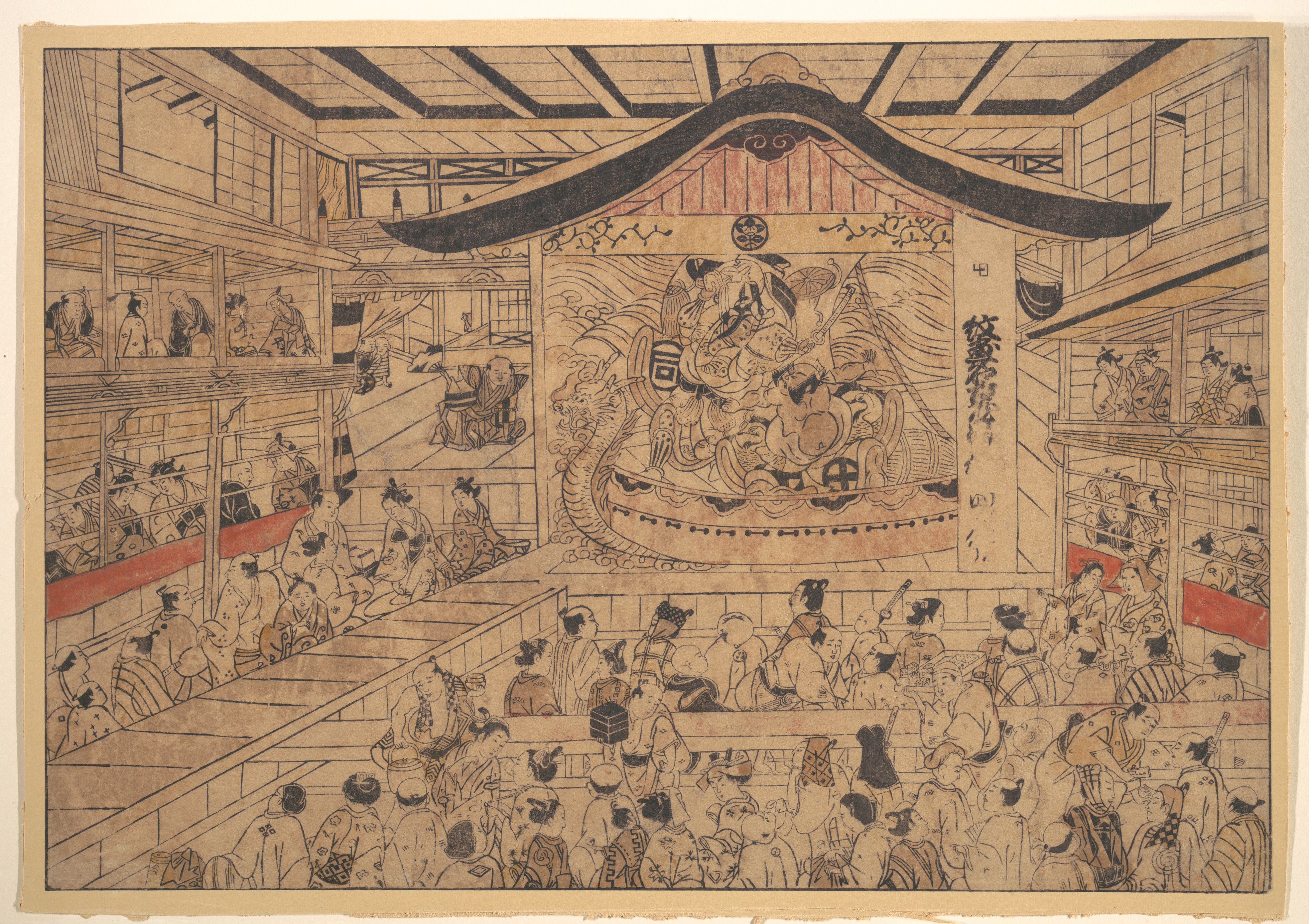Perpsective View (uki-e) of a Kabuki Theatre, with a Performance of The Crest Patterns of the Soga Brothers and Nagoya Sanza (Mon-zukushi Nagoya Soga) 1748 (Enkyō 5), first month

Full description
This print captures a panoramic view of a crowded Kabuki theater during a scene from a vendetta play based on the legend of the Soga brothers. Kabuki theater developed during the early seventeenth century in Japan. Kabuki theater is often considered to be the opposite of the Nōh theater, another classical form of Japanese dance-drama that was popular in the fourteenth and the fifteenth century, while it uses vulgar language, tells bawdy jokes, and deploys physical acrobatics to entertain the audience.
Kabuki theater began with a female troupe performing on a makeshift stage, In the earliest forms of kabuki, female performers played both men and women, often in comic scenes about ordinary life. Later, cross-dressing male actors took over previously female-acted roles. Because of its origin and development, kabuki theater offered some earliest commentary on gender, class and sexuality.
In this print, the celebrated actor Sanogawa Ichimatsu I (1722–1762) played the starring role of Soga no Gorō, on the left, and his loyal retainer Asaina is played by Ōtani Oniji I (1717–1757). They occupied the center of the stage. A hanamichi on the left side leads to the center stage, which functions as the entrance and the exit for performers. The actor's stylized movement on hanamichi offers the audience the first glance of the character. The audience sits on both sides of the hanamichi as well as in separate boxes. Kabuki was unfavored by the ruling military class of the Japanese society (shogunate) because the performance offers the occasion for the commingling of different social classes.
Entry by Cen Liu
Comments
to view and add comments.
Annotations
No one has annotated a text with this resource yet.
- typeImage
- created on
- file formatjpeg
- file size3 MB
- creatorOkumura Masanobu (Japanese, 1686–1764)
- credithttps://www.metmuseum.org/art/collection/search/56534
- rightsPublic Domain
- rights holderThe Metropolitan Museum of Art


